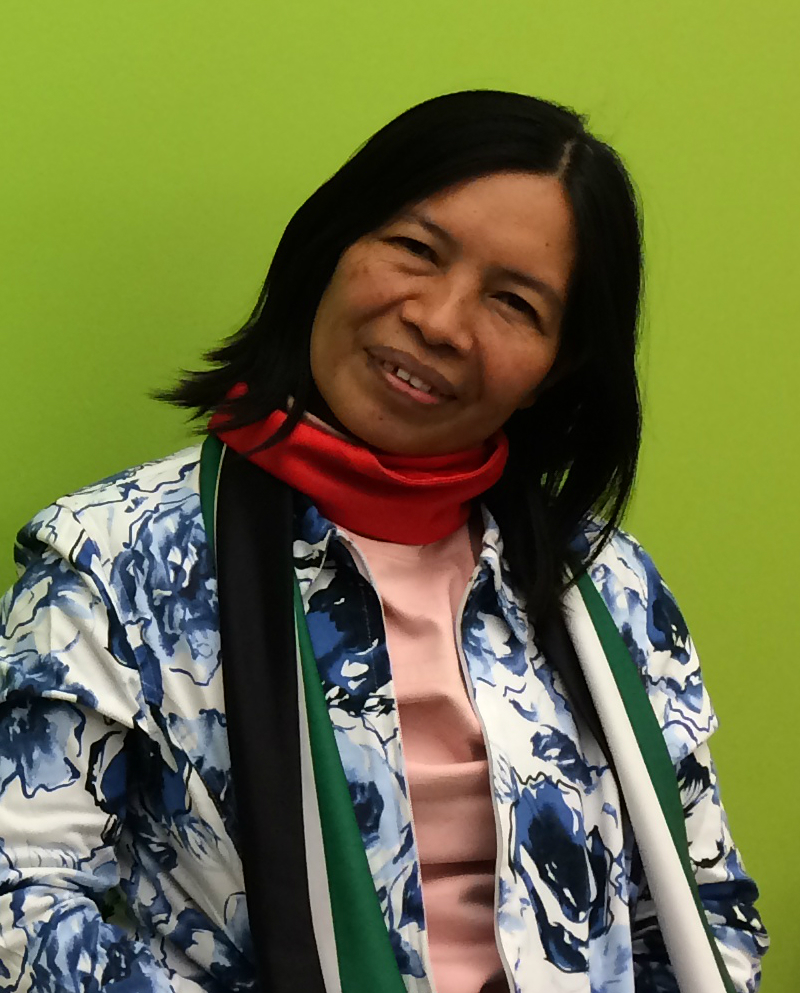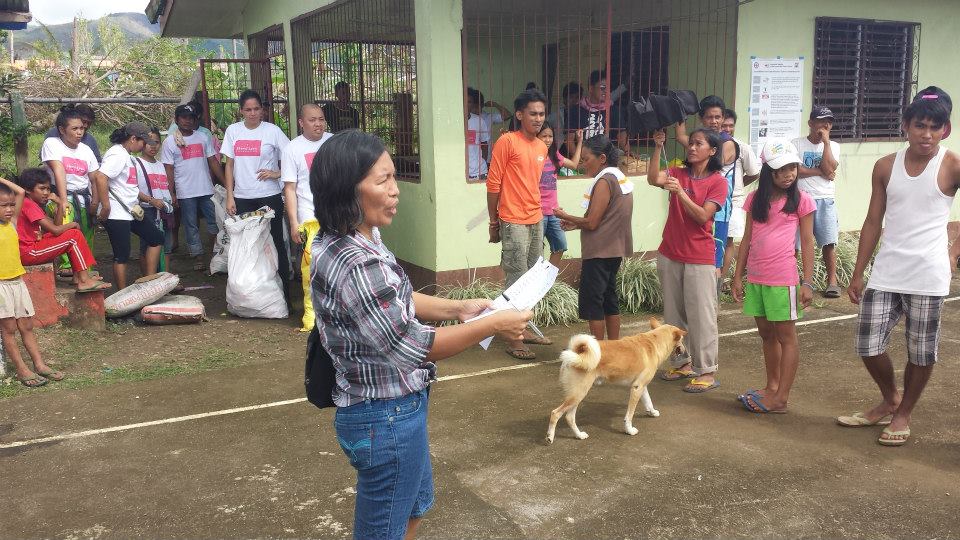Who is there when the typhoon hits? Local organizations and disaster response following Yolanda (Haiyan) – Part I
 People collect clean safe water to drink from a water tank in Catigbian, Tanauan on the island of Leyte. Photo: Anne Wright / Oxfam
People collect clean safe water to drink from a water tank in Catigbian, Tanauan on the island of Leyte. Photo: Anne Wright / Oxfam
Part 1 of an interview with Josefa Roces-Pizon, Executive Director of the Rural Development Institute-Leyte in the Philippines.

“Typhoon Yolanda [Haiyan] was bigger than anyone could have imagined,” says Josefa Roces-Pizon, Executive Director of the Rural Development Institute-Leyte (RDI-Leyte), “but we were able to cope.”
Coping might be an understatement. Almost five months after the strongest and deadliest Philippine typhoon on record, Roces-Pizon and her staff and volunteers at RDI-Leyte are still working from their damaged offices and home.
“We are only are using a tarpaulin for the roof at the office, and an electric surge killed our remaining computer,” she says.
“At home, I don’t have electricity yet, or water in our faucet. But our staff are at least stable so that we can give to others.”
Before that fateful day of November 8th when over 6,000 people were killed in the eastern Visayas region of the Philippines, the Rural Development Institute-Leyte had been working to support smallholder farmers in the rice- and sugar-producing areas within Ormoc City. They had four full-time and four part-time project staff. Roces-Pizon says that RDI-Leyte was a struggling NGO pushing the government to enact agrarian and land tenure reform in an area where “feudalism is high,” and assisting farmers to improve productivity and become more self-reliant.
But with 11 million people affected by Typhoon Yolanda (Haiyan), RDI-Leyte, like every nonprofit in the area, had to assume a different focus. With 20 additional volunteers, RDI-Leyte was put in charge of 53 affected barangays [the Filipino term for a village, district or ward] in the Ormoc area after the typhoon.
Luckily, they were ready. The organization had started some initiatives on disaster risk in 2003, and with floods and landslides and typhoons affecting the farmers they served, disaster preparedness became part of the RDI-Leyte’s mission in 2007.
“We never had much funding for disaster risk reduction, but we would go to meetings and workshops to learn more,” says Roces-Pizon. “Staff had that heart.”
Individual households, neighbors and community members are truly the first to respond when any disaster strikes. People in the local area can immediately take life-saving actions and trained and prepared people can have more success in search and rescue, first aid, and evacuation, as well as with the provision of basic needs including food and emergency health care, shelter, clean water and sanitary conditions. This is why enhancing local capacities to prepare for and respond to disasters is crucial.
“She has been responding from day one,” said Oxfam American Senior Humanitarian Policy Advisor, Scott Paul, who recently hosted Roces-Pizon in Washington DC to talk about improving humanitarian disaster response.
“As a local nonprofit, we deal with the fastness of the immediate response. We are not waiting,” says Roces-Pizon. “The value what we bring is the availability of local resources and manpower. With just a few staff and volunteers, we were limited, but we were able to maximize all the resources we had on the ground. National level partners, especially the Philippine Network of Rural Development Institutes, Inc. and the National Rural Women Coalition (PKKK) were also able to support us.”
In the early days following the typhoon, RDI-Leyte coordinated closely with national and local government entities to conduct damage and needs assessments, develop plans of action, and provide assistance. (You can watch here a video of Roces-Pizon describing RDI-Leyte’s work just five days after the typhoon.)

Making sure that local organizations’ contributions are front and center in assessments following disasters is crucial because it is extremely difficult for international actors to attain a rich understanding of local dynamics and needs on their own. RDI-Leyte , for example, understood that addressing damage to agricultural assets would be crucial in any response to the typhoon – something that international organizations, at first, failed to grasp.
“Because we work with the vulnerable, marginalized people who are living in far-flung areas, these people feature in our assessments,” says Roces-Pizon.
“We may only know our areas, but we know our areas deeply. We understand the governance structures. We have the existing relationships with barangay leaders and can give the full picture of who is doing what, which not even the government can do at times. We can see all the gaps and we would update [our assessment] every week in our area.”
As the international community began to descend on Ormoc City, Roces-Pizon saw the importance of participating in the humanitarian communication channels such as coordination (or cluster) meetings. However, she soon grew frustrated.
“I tried to convince the UN and international groups to base their intervention at local levels during meetings, but they did not take seriously our recommendations on local coordination,” she explains. “I wondered if there is really a desire to link the local perspective.”
“I sat in a lot of cluster meetings early on, but we couldn’t keep sitting. The gap in the distribution of relief started growing with international coordination and unlike international groups, we don’t have the luxury of focusing on only one need at a time. We had a realization that the ground level needed our attention more.”
Roces-Pizon acknowledges the problem, however, when “the very efficient and responsive [local organizations] are not part of the cluster/coordination meetings.” This contributes to the “big gap” between the international response and community needs.